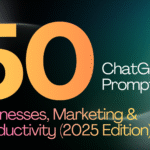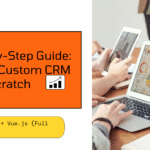The Marketing Landing Page Conversions Handbook is one of the most popular resources we have offered in 20 years of publishing.” However, nutraceutical marketing reveals a big surprise – a shocker, actually – regarding landing pages. There aren’t any.
What are supplement businesses doing instead?
IT’S LIKE THIS… My friend Rich decided he wanted to buy a particular kind of supplement. He was looking for an elderberry product for his immune health.
The first ad that popped up in a Google search seemed to fit the bill. The ad headline included the words “elderberry” and “immunity.” So far so good.
However, when he clicked on the ad link, he reached the company homepage.
Although it was an excellent homepage, Rich didn’t immediately see what he was looking for, or what the ad promised.
The result? He bailed in less than 3 seconds and went looking elsewhere.
The same thing happened with all other ads for elderberry supplements.
IT SHOULD BE LIKE THIS…
The ad Rich clicked on should have sent him to a product page offering what he sought.
And only what he was looking for.
No distractions. No other options. Only the product, accompanied by a call to action to buy it.
THE REALITY
That second scenario is a ‘should’ve-been’. It doesn’t exist.
Here’s what happens.
A recent Google search on the term, “elderberry,” resulted in seven ads.
All of them were linked either to the company homepage or to a multi-products page.
Not one went to a landing page.
This isn’t unique to elderberry supplements.
The same result came from a search on “quercetin.” None of the nine ads led to a landing page. One led to a blog article that didn’t mention quercetin.
Ditto for a search on “pet CBD.” Six ads. No landing pages.
This isn’t a scientific survey with all kinds of statistical bells and whistles. It’s just a few quick searches on three of the more popular supplements. Nevertheless, it reveals a clear pattern.
Nutraceutical ads don’t link to landing pages. Instead, they usually link to the company homepage. Or they send a visitor to a product page offering multiple choices.
This observation cries out for explanations.
The primary one I’ve seen is that marketing departments don’t have the time and resources to create landing pages.
Seriously, that’s the most common explanation I’ve found.
Think about that for a moment. It’s the same as saying marketing departments don’t have the time and resources for… well, marketing. At least not for marketing using the most powerful and indispensable tool on the internet.I don’t buy it.
I think a more likely explanation is a lack of understanding of what a landing page is and what it isn’t.
A homepage isn’t a landing page. Neither is a multiple-product page.
This confusion may explain why an exact match search for, “what is a landing page,” yields nearly 7 million results. It’s as if online marketing advisors feel the need to educate people about what a landing page is because so many marketers don’t understand the concept.
K.I.S.S.
Keep It Simple, Silly!
Simply put, a landing page is where people “land” when they click on an ad banner, search engine result, or email link, or when they visit a special promotional URL they heard about on TV, radio, or other offline media.
Its sole purpose is conversion. That should be the only option.
That’s the point I had planned to make in this article. However, explaining how to boost landing page conversions by 100% requires actual landing pages.
Specifically, I had planned to explain research showing how removing all ‘non-buy’ clickable options, including the navigation bar at the top of the page, can more than double conversion rates.
That’s just one trick. Similar conversion boosts also rest on other features of a good landing page. Consistency with the ad. Placement of images. Page design. Button format. And much more.
The conceptual design is simple. A landing page offers only one product and only one clickable option – i.e., the call to action.
Although the concept is simple, a well-designed single-option page is just the beginning of creating a good landing page.
In addition to its simple design, an effective landing page also depends on how persuasive the marketing copy is in influencing a visitor to take that one-and-only action step.
That’s it. The right design, coupled with persuasive copy, equals higher conversions.
THE CHAIN OF PERSUASION
In my experience as a copywriter, I’ve developed campaigns following a specific chain of persuasion. Each link in the chain has a role leading to the ultimate goal – i.e., a conversion.
The ad headline is where the persuasion ball gets rolling. Its role is to entice a viewer to click on it. This is why a compelling ad headline is worth its weight in gold.
The visitor immediately knows he or she is on the right track when the headline of the landing page is consistent with the ad headline. Research shows this headline-to-headline comparison happens in about 1/20th of a second.
That’s how long you have for the visitor to decide whether to stay on the page for the few seconds it takes to read the first few lines.
Then it’s the job of the page’s text, and any accompanying images, to persuade the reader to keep reading.
Persuasive copy from there leads to the call to action.
A well-thought-out, persuasive CTA is the final chance for the landing page to convert a visitor into a buyer.
FUELING CONVERSIONS
Linking supplement ads to homepages or multi-product pages is like running a Lamborghini on used cooking oil from a fast-food restaurant. It can be done, just not very well.
A more effective campaign requires high-performance fuel. That’s what a landing page is. It runs all cylinders of a campaign like nitro for an F1 racecar.
Creating one is conceptually very simple. It takes just three steps.
PUTTING IT INTO PLAY
Step 1. Design the page layout. If it’s going to be part of the company’s website, strip out all clickable distractions, including the navigation bar. Provide only one option, the call to action.
Step 2. Create persuasive marketing copy. It starts with a powerful headline matching the ad’s promise linked to the landing page. It continues with images and textual material that keeps the reader’s attention. In other words, it’s much more than a product description.
Step 3. Test it. Test it. And test it some more. Tweak ad headlines and compare their click rates. Revise images and text to optimize time-on-page. Modify CTA text and ‘buy’ buttons. Continue A/X texting to improve the control until conversions peak.
POWERING UP THE BEST TOOL
Doing good work on any kind of job relies on using the best tools. Supplement marketing is no different.
The best, and most unused, marketing tool for nutraceuticals should be landing pages.
Putting them to work gives you a leg up on the competition. Meeting the challenge of Step 2 the right way is crucial.
Once you have the correct page design, its effectiveness depends on how well you persuade the reader to take action.
This is where good marketing copy shines.
That’s where I come in. I specialize in writing persuasive copy for landing pages and other marketing venues.
Since I’m also a research scientist, this includes satisfying the increasing demand for scientific credibility by savvy customers.
A good supplement landing page relies on both.






